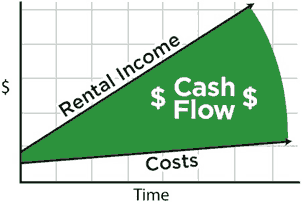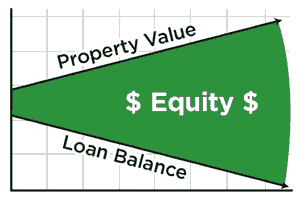3 Reasons Your Credit is Bad (+ How to Fix it!)
Damaged credit can impact your ability to take out a loan, creating a cyclical cycle that may feel impossible to overcome. To repair your credit, it is important to understand how it became damaged in the first place. There are many reasons your credit might be in rough shape but, thankfully, there are also many ways to repair your credit into something workable. Here are three ways that your credit might be damaged and how you can go about fixing it:
- No Credit:
Credit – “The ability of a customer to obtain goods or services before payment, based on the trust that payment will be made in the future.” (Oxford Languages)
A lack of credit prevents you from taking out a loan along with barring you from other financial opportunities. Without a credit score, it can be difficult or even impossible to purchase a home, rent a home, finance a vehicle, or take out a loan, among other things. Think of it this way; every time you rent something, the company you’re renting from is gambling on the fact that you’ll return that entity. Credit scores tell a company if you are to be trusted. A good one shows that you have a history of borrowing money and paying it back promptly. A bad credit score shows that you have either not paid back borrowed money or taken too long to pay back borrowed money. No credit score is often just as bad. It tells companies that you don’t have a history, meaning they cannot gauge if you’re trustworthy. More often than not, they will not be willing to take this uncalculated risk.
The good news is that credit is relatively easy to build passively. If you have no credit, the first thing you should do is apply for a credit card. You’ll want to shop around for something that fits your needs to ensure you’re getting the card that will benefit you the most. Once you have a card, pick some expense that you would be paying for regardless, something small that you can put on the card and pay it off every month without issue. To achieve and maintain a good credit score, you have to make sure you’re paying off your credit card every month. Most credit card companies allow you to set up automatic payments so that no action is required on your part to ensure you don’t miss a payment.
If you’re seeking a loan and need to build your credit quickly and passively, another easy thing you can do is find a responsible family member or friend who has a good credit history. Ask them to add you to their card. They are not going to give you their card, nor will you have access to any of their finances, but by adding you to their account you can benefit from their good credit history. This will allow you to become eligible for loans while you work on building your own credit history in the background.
- Utilization:
Credit Utilization Ratio – “Your credit utilization ratio is the amount of available credit you’re using… Only revolving credit accounts, such as credit cards or personal lines of credit, apply to your utilization ratio” (Discover).
Your credit limit is the amount of money you’ve been approved to put on your credit card. Your credit utilization ratio, also sometimes called credit utilization rate, is how much of that allotment you’re using. Why does this matter? Your credit utilization rate accounts for a significant portion of your credit score, typically around 30%, making it a big deal when it comes to trying to improve your score. If you’re using a larger portion of your credit limit, this could indicate that you’re overspending and may be unable to pay back what you’ve borrowed in a timely manner. On the other hand, a lower utilization rate, shows responsible borrowing habits, meaning you can be relied on to pay back what you owe.
So, how do you calculate your credit utilization rate? All you need is some basic math:
- Add up your current outstanding balance on all your credit accounts. This is your total debt.
- Add up your credit limits on these accounts. This is your total credit limit.
- Divide your total debt amount by your total credit limit amount.
- Multiply that amount by 100 to arrive at your credit utilization rate.
Generally, a rate between 1% and 10% is ideal but don’t panic if your rate is higher. There are plenty of ways to improve your credit utilization rate:
- If you’re nearing your credit limit, it may be a good idea to ask your credit card company for a credit limit increase. If your credit limit goes up but the amount you owe on the card stays the same, your utilization goes down, which increases your credit score. This will only work if you maintain a proportionally low balance once your limit increases. It is important to keep in mind that if your credit isn’t the best initially, it is likely your increase request won’t be approved.
- The easiest and most basic way to improve your utilization rate is to pay down your debt. Ensure you are paying off your balance on time and not spending beyond your means. To see the fastest results, you may want to be aware of the timing in which you are making payments. Lenders typically report your balance at the end of your billing cycle (usually every 30 to 45 days). Making a payment on your balance before the end of your billing cycle means the lower balance will be reported. However, if you wait until the cycle is closed, it is worth it to pay over the minimum amount required month to month to see a greater improvement in a shorter amount of time.
- Bad payment history, bankruptcy, and foreclosure:
If you have a bad payment history, making sure you pay your bills on time is the best way you can improve this. If you’re able to, setting up automatic payments may be the best way to ensure this happens. Set it up so that the minimum owed gets paid every month on time and, if you’re able to, pay extra in addition. If you’re unable to set up automatic payments, using a reminders app or writing your payment date on your calendar could be your best option. The only way to solve bad payment history is to change your habits to make sure you have a good payment future.
As for bankruptcy and foreclosure, unfortunately, the only way to resolve these issues for good is time and quite a lot of it. While you may not be able to get your own credit score up in a timely enough manner, you can find a partner with good credit. Finding someone to partner with on your flips who has good credit is the only way to receive a loan if your credit is not suitable. Once your credit has improved, you can add yourself back onto those loans.
Have more questions? Ready to inquire about one of our loan products? Give us a call at (866) 500 – 4500 or email us at loans@bridgewellcapital.com! We look forward to hearing from you!
Sources:
https://www.investopedia.com/terms/c/credit-utilization-rate.asp
https://www.bridgewellcapital.com/blog/
https://www.bridgewellcapital.com/wp-content/uploads/2024/07/How-to-Improve-your-Credit-Score-1.pdf
https://www.cnbc.com/select/when-did-credit-scores-start/
https://www.discover.com/credit-cards/card-smarts/what-is-your-credit-utilization-ratio/


